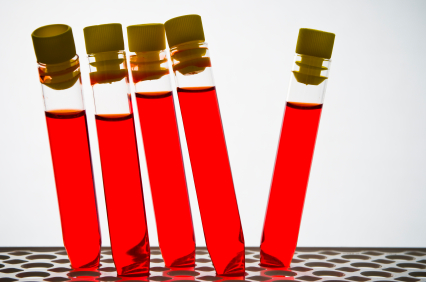Biomarker Panel May Help Diagnose Major Depressive Disorder
It is hoped that measuring biochemical substances in blood will help in the diagnosis of mood disorders and help direct patients to the most effective therapeutic regimens. J.L. Billbielo reported at the 51st Annual Meeting of the National Institute of Mental Health’s New Clinical Drug Evaluation Unit (NCDEU) in 2011 that investigators from Ridge Diagnostics in North Carolina were using this type of biomarker panel in an attempt to provide a predictive algorithm for a diagnosis of major depressive disorder. The panel of 10 assays was derived from a larger screening set and included: alpha 1 antitrypsin (Alpha 1AT), brain-derived neurotrophic factor (BDNF), cortisol, epidermal growth factor (EGF), resistin, and soluble tumor necrosis factor receptor II (sTNFR2). The research group found that this optimized algorithm distinguished depressed subjects from normal controls with a sensitivity of approximately 90% and a sensitivity of 84%.
Editor’s note: This assay is available commercially and appears to represent an interesting panel of potential neurobiological markers of depression, including neurotrophic factors, endocrine stress hormones, and inflammatory markers. While its diagnostic utility is somewhat doubtful and must be further demonstrated, this editor hopes that similar panels could ultimately predict individual clinical response to a given treatment. For example, patients with high levels of inflammatory markers might respond better to treatments aimed at suppressing inflammation.
So far, it has not been established whether low BDNF or increased inflammatory markers in depression are specifically related to degree of clinical response to treatment. High levels of the stress hormone cortisol and failure to normalize cortisol after dexamethasone, a synthetic steroid, is administered (in a dexamethasone suppression test or DST) have repeatedly been shown to be markers for early relapse in those who have remitted clinically.
BDNF decreases during episodes of unipolar and bipolar depression, and persistently low BDNF may be another marker of early relapse. This could be a more important use of assay panels than for the diagnosis of depression, which is usually easily made. However, there are likely many varieties of depression, and subtyping them biochemically may be helpful in the future so that clinicians can recommend the appropriate medication for a given type.
A combination of clinical and neurobiological markers may be helpful in the early recognition and treatment of bipolar disorder (especially if its development were to render the diagnosis and treatment of children less controversial). Ultimately, it could help in the development of clinical predictors of individual treatment response. This study appears to be a first step toward demonstrating the utility of a broad-based panel of biomarkers that is associated with major depressive disorder.
Comments
Leave a Reply


